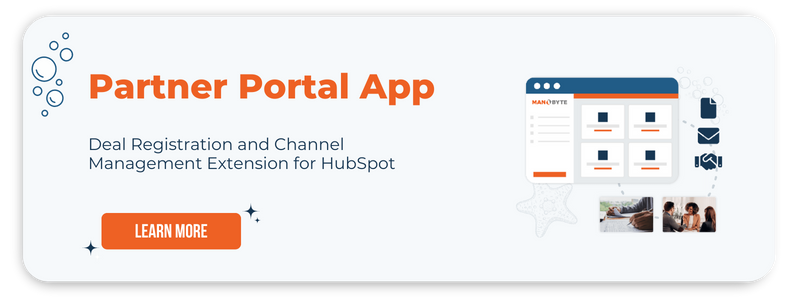Why Lead Management Helps Your Partners Sell Your Products
Emily Buchan

Lead management is an important part of any business, but it's especially critical for manufacturers who sell products through a vast network of not only distributors and retailers, but also dealers, architects, builders, contractors, and more.
How a building materials manufacturer manages those leads—meaning, how you continue to track, manage, and delight your customer's customers—will dramatically impact how well your channel sales partners are able to sell your products moving forward.
But while that may seem obvious, it's also not necessarily as cut-and-dried as a lot of people realize. If you really want to understand how lead management helps your partners sell your products, there are a few important things you'll need to keep in mind.
The Power of Lead Generation: Breaking Things Down
Before you can help manage leads for your partners and retainers, you have to help generate leads. Effective lead generation gives you and your partners the power to sell more effectively in a variety of ways by:
- Ensuring proper lead routing and empowering partner follow up
- Giving you a more complete understanding of how your marketing and sales messages are performing
- Reducing the time it takes partners to close a sale
- Giving you more insight into your channel and making attribution reporting effortless
- Providing a measurable, repeatable, and scalable system on which to grow your distribution network and increase selling power
Benefits of Lead Routing
One of the biggest benefits of effective lead routing is giving your partners more "at-bats" that are truly interested in YOUR brand. When your partners are handed qualified leads as opposed to cold ones, they have more actionable information to work with than ever before. Their own teams have a critical context that allows them to understand the needs and wants of the lead in question. This makes sure that they're able to follow up with those leads promptly at specific points, thus moving the lead closer to a purchasing decision. The overall sales cycle is also much shorter, so you can improve your cash flows.
This also creates a better and more personal experience for the lead, thus improving their relationship with both your partner and your larger brand.
One way to start routing leads is to enhance your Where to Buy experience on your website. Integrate it with calendar scheduling tools, email & SMS notifications, and interaction tracking within your CRMs. Learn more about product locator features for building products.
Necessity of Channel Sales Enablement: Sales Playbooks
But in a larger sense, a quality demand generation and lead routing program also gives you a wholistic view of your marketing and sales messages. You can finally understand exactly what is working and, more importantly, what isn't. You can break things down to find out what resonates within specific audiences or even certain buyer personas, for example. Then you can carry those findings into campaigns that cross channel partner efforts, rather than hoping each partner will invest in understanding the end customer of your specific product. (Hint: they won't).
This regularly takes the form of sales playbooks for your indirect sellers. When partners come into a situation armed with accurate information about which messages are really making that essential connection with someone, they can improve their real-time communication tactics to help dramatically reduce the amount of time it takes to make that sale. Sales playbooks for channel partners also have an immediate, positive impact on close rates.
Generating Fast, Accurate Actions That Create Predictable Results
Another important thing to understand is that once a lead management system (demand generation + lead routing) is in place, attribution reporting becomes practically effortless when you have the right information in your CRM -or Customer Portal- and PRM- or Partner Portal. This again gives you more insight into your customer's customers so that you can make actionable and more informed decisions to increase sales across all channel partners.
Track Channel Partner Sales Data
Evaluate partners like you would evaluate employees. Either they are over-performing, performing at standard, or under-performing. In order to prune under-performing channel partners from your ecosystem (and create a sense of exclusivity for your brand) you have to know what each is contributing.
When partners are assigned to specific deals within the context of a single platform, your own in-house team needs to be able to track which partnerships are yielding the greatest return on investment and which ones aren't. You can also easily see how far off the mark they may be. Some partnerships may just need a bit of additional support by way of new collateral, training materials or similar options. Some partnerships may need to be abandoned altogether.
But the key point is that you'll never know which partnership falls into which category unless you're making an active effort to track and report on them, which is why attribution reporting (and thus, lead management) are so crucial.
After all, you can't manage what you don't measure, so if your organization is not managing partner contributions, what IS your partner partner program managing?
The benefits of lead management are a two-way street for both you and those in your partner network. Lead management has been shown to dramatically decrease overhead time for partners, for example. Because of the structure of the system itself, they'll naturally be spending less time on overhead administrative tasks pertaining to your leads, making them more likely to pitch your product than a competitor's.
Whatever is easiest to be sold, will get sold.
How to Manage Indirect Sales Leads
Overall, a lead management process provides a measurable, repeatable and scalable system that you can use to grow your distribution network and indirect selling power—and a tech-based solution like a partner relationship management (PRM) system should absolutely be at the heart of your efforts. This is similar in concept to the type of customer relationship management (CRM) that you're likely already using.
Even better, you can simplify your Deal Registration and Lead Routing Efforts using ManoByte's Partner Deals Portal App for HubSpot.
Regardless of what softwares you choose to use, the lead management principle's remain constant.
From the moment a lead is logged into your system, a channel partner and/or manager has total visibility into that opportunity. They can track it from the moment of its creation to its logical conclusion (a won or lost sale), making sure that it was nurtured in all the right ways that were necessary for success.
From your own point of view, a PRM system is a perfect way to streamline the partner onboarding process as much as possible. If you're still trying to recruit new partners and bring them into your programs manually, what you're really doing is creating friction within each point of engagement that really doesn't need to be there. A properly configured PRM system, on the other hand, can simplify the onboarding process in a way that also reduces costs and increases satisfaction for those partners at the same time.
If you want someone to get enthusiastic about selling your products and services, it stands to reason that you would want to make it as easy as possible for them to do so and allow them to hit the ground running. One of the core benefits of a PRM system for lead management is that it allows you to accomplish exactly that.
Not only that, but you can also deploy lead qualification and scoring systems to better understand the maximum potential of each of the types of sales leads you're working with. Managers can always have total visibility into whether leads are being "worked," and they can always quickly take action if needed.
But overall, a partner relationship management solution is a great way to reduce both the labor required and the complexities involved with effective sales lead management. It eliminates the types of complexities and conflicts that are usually involved with lead management distribution that is still being managed via Excel spreadsheets or by similar means, and it helps capitalize opportunities to automate core functions in a way that streamlines lead management across the board.
Using Better Lead Management to Build a Better Business
In the end, it's clear that effective lead management brings with it a host of important benefits, all at the exact same time. Not only does it ensure proper lead routing for partner follow up at critical junctures, but it also empowers teams to take prompt action to move leads towards purchasing decisions as quickly as possible.
But when you also consider the fact that effective lead management provides a measurable, repeatable and (most importantly) scalable system on which to grow your distribution network, it also becomes an invaluable opportunity to increase your brand's selling power—which may very well be the biggest benefit of them all.
Ready to Dive In?
Work with our team of HubSpot experts and watch us take clunky systems, tech stacks, websites, and portals and turn them into tailored, intelligent workflows that deliver business outcomes.





